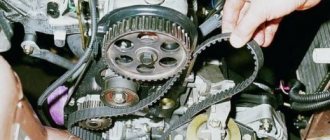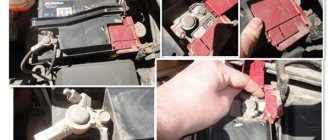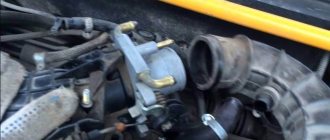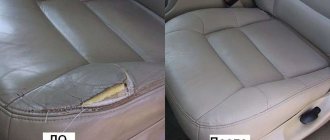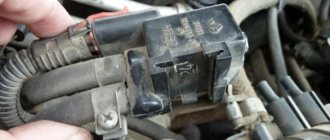Many motorists are concerned about the question: what will happen to the car if you drive over a speed bump at high speed without slowing down. Auto mechanics and driving instructors unanimously fear serious damage to the suspension. But is this really so?
Foreign bloggers decided to test experimentally whether these horror stories about the irreparable harm of such a movement are true. For their experience, they took a Mercedes-Benz E-Class. The young people specially removed some body elements from the car so that all damage to the suspension could be clearly seen when driving through obstacles at high speed. Initially, they tried to drive this way over typical bumps made according to standards. It turned out that in this case the parts of the front suspension could be significantly damaged. But if, when approaching a speed bump, you slow down and then accelerate, no significant damage may occur.
The experimenters also decided to test the effect of low bumps, which are usually installed in parking lots. It turned out that driving through such obstacles at a fairly high speed does not cause significant damage to the suspension of a passenger vehicle. And the most dangerous were the high and wide speed bumps, which were not installed according to the standard. Such structures can significantly damage the suspension elements. So it's no surprise that most drivers instinctively slow down when approaching.
Algorithm for how to pass a speed bump using an automatic vehicle
At this moment, the front part of the car is unloaded and jumps over the recumbent with minimal shock absorber travel. Driving at an angle. One of the driving options implies that, when approaching an obstacle, you need to park the car at a slight angle to it (if the road situation allows, you need to carefully ensure that the sides are not turned out to be other cars).
In this case, first one front wheel will roll, and then the other, the transition will be much smoother. Driving along one edge Sometimes you can see how motorists pass a speed bump, clinging to the curb. In this case, you need to be careful not to interfere with passing cars, and also not to damage the wheel rim on the curb. There is an opinion that the suspension will wear out faster if speed bumps pass frequently in this way. The design of speed bumps must comply with three GOSTs: GOST R 52289, GOST R 52290 and GOST R 51256.
How to drive over a speed bump in a car?
The braking force of a car is directed in the opposite direction of the movement of the car itself, and the inertial force is directed in the direction of movement.
It turns out that one force pulls the car backward, and the second - forward. A moment of force arises, pressing the front part of the car to the road surface, and lifting the rear part. At the same time, the load increases significantly.
If you drive over a speed bump in this way, serious damage is possible.
If it is wrong to overcome a speed bump, then the front suspension will suffer first of all.
How to do
The front of the car will rise, the springs of the front suspension will be unloaded and, in the unclamped position, will gently absorb the blow from below at the moment of contact with the road unevenness.
After the front wheels have cleared the road bump and the rear wheels have not yet reached it, briefly press the brake pedal to lift the rear of the car up, unloading the rear suspension springs. As a result, the car will easily and smoothly roll over the speed bump.
If an obstacle in the form of an artificial road bump is detected late, and it is impossible to reduce the speed to the 10 km/h recommended in the previous section, use intensive braking, and 2 meters before the obstacle, release the brake pedal, immediately after pressing the gas.
As a result, the center of gravity of the car will shift back and at the moment the front wheels pass an obstacle, the front suspension springs will be decompressed and the car
How to drive over speed bumps?
And since drivers don’t really want to damage their car, they slow down.
Driving schools teach how to drive over speed bumps. Both in theory and in practice. But some not entirely conscientious instructors do not explain this to drivers, and therefore they do not know how to do it. And the car may suffer from this.
Without a doubt, you need to pay attention to speed bumps.
But that's not true. We need the right approach. Because then you will have to deal with the not very pleasant consequences.
What's the best way to get past a speed bump?
The advice here is simple: do not pay attention to them, because the durability of the car is more important. Some drivers believe that bumps on the roads will not be so noticeable if you drive through them at high speed.
This is fundamentally wrong. Overcoming a speed bump requires a specific approach:
- two meters before the artificial bump, reduce the speed;
- We sharply press the brake, after which we release the car, thus making a dive forward;
- It is recommended to add gas to the speed bump;
- after returning to the starting position, when the speed is too low and the car does not have enough traction, we press the gas. This gives the car a push forward and relieves the load on the front axle;
- We do not recommend flying over such bumps at high speed.
- you see the corresponding road ;
Remember that your thoughts when passing a speed bump should not be only about it.
Ivantiev › Blog › Speed bump
The front of the car will rise, the springs of the front suspension will be unloaded and, in the unclamped position, will gently absorb the blow from below at the moment of contact with the road unevenness.
After the front wheels have passed the road bump, but the rear wheels have not yet reached it, you need to briefly press the brake pedal to lift the rear of the car up, thereby unloading the rear suspension springs. As a result, the car will gently pass the rear wheels through the road obstacle.
As a result, the car will easily and smoothly roll over the speed bump.
Complicated driving technique In the case when an obstacle in the form of an artificial road hump is detected late, and it is impossible to reduce the speed to the 10 km/h recommended in the previous section, it is necessary to brake, and 2 meters before the obstacle, release the brake pedal, instead pressing the gas. As a result, the car's center of gravity will shift back and
How to properly drive over a speed bump
You should not be afraid of the sounds that arise with this method: experts assure that it is safe for the car.
It is worth considering that if you did not notice the policeman in time, you need to brake sharply right in front of him, and then sharply release the brake, then the shock absorbers will lift the wheels above the unevenness.
In principle, this should be done in all cases of unexpected obstacles on the road such as holes and bumps. The car will shake, of course, but it won’t be so painful for the suspension. However, this method is unlikely to help for cars with low ground clearance.
Zheka147 › Blog › How to drive through speed bumps?
But if you do this constantly, it will eventually simply fail. It is correct to brake not on the bump itself, but even before overcoming it - in advance.
And then, literally a meter before the IDN, you should release the brake pedal. The speed should be such that there are no extraneous sounds in the car.
The height of skill is considered to be driving through an obstacle using the following algorithm: slow down in advance, then release the brake immediately before the obstacle, raising the nose of the car.
How to drive over speed bumps?
At this moment, the front part of the car unloads and jumps over the recumbent with minimal shock absorber travel. Driving at an angle. One of the driving options implies that when approaching an obstacle, you need to park the car at a slight angle to it (if the road situation allows, you need to carefully ensure that the sides there were no other cars).
In this case, first one front wheel will roll, and then the other, the crossing will be much smoother. Driving along one edge Sometimes you can see motorists passing a speed bump, clinging to the curb. In this case, you need to be careful not to interfere with passing cars, and also not to damage it on the curb.
2
Important
If the driver has been driving here for a long time, then he remembers very well about the speed bump and without a sign. And when a novice or a non-resident is driving, the absence of a sign can become a serious problem, since the driver will not be able to brake in time and assess the situation.
Therefore, warning signs are required. In cities and towns they are placed within 50-100 meters of the obstacle.
Outside populated areas, installation at a distance of 50-300 meters is allowed.
- The driver needs to start slowing down to 20-40 kilometers per hour in advance. Driving faster is not recommended if you want to maintain your suspension.
- The box shifts to a lower gear.
- An artificial obstacle is overcome at low speed;
- After passing, the higher gear is switched on.
There is an option to pass the section using the rolling method.
Therefore, artificial obstacles are extremely useful, especially in a large city.
Drivers overcome these obstacles on their way every day, and sometimes several times a day. But not everyone knows if they are doing it right.
After all, even experienced drivers can drive over speed bumps incorrectly, as a result of which they can easily damage the car’s suspension.
Who were speed bumps invented for?
Perhaps many are interested in the question of for whom and why artificial bumps, or, in simple terms, “speed bumps” were invented. They were created, first of all, for those drivers who do not pay any attention to the road, to road signs, to pedestrians, to pedestrian crossings and who do not take into account the speed of their movement.
In full accordance with the laws of physics, the front of the car will be pressed against the road surface, and the front suspension springs will be compressed.
Half a meter from the speed bump (line B), you need to sharply remove your foot from the brake pedal.
The front of the car will rise, the springs of the front suspension will be unloaded and, in the unclamped position, will gently absorb the blow from below at the moment of contact with the road unevenness.
Attention
After the front wheels have passed the road bump, but the rear wheels have not yet reached it, you need to briefly press the brake pedal to lift the rear of the car up, thereby unloading the rear suspension springs. As a result, the car will gently pass the rear wheels through the road obstacle. As a result, the car will easily and smoothly roll over the speed bump.
How to properly drive a speed bump on a manual or automatic vehicle
An artificial bump on the road is commonly called a “speed bump”. It is formed to improve road safety in places with high accident rates - near pedestrian crossings, near schools and kindergartens, in courtyards, and so on.
Speed bumps are usually indicated by a speed limit sign of 20 km/h (or 40 km/h) and are also marked with special road markings.
It is important to follow the rules when overcoming such artificial bumps in order to avoid possible problems with the car.
However, the rules for a car with a manual and automatic transmission are slightly different.
1. How to correctly pass a speed bump with a manual transmission (manual transmission) 2. How to correctly drive a speed bump with an automatic transmission (automatic transmission) 3.
This is due to the fact that if you press the gas or brake directly on the speed bump itself, which does not always meet the requirements of GOST due to its “brokenness,” this can cause damage to the tires due to their additional adhesion to uneven elements (plastic protrusions, metal bolts and so on).
How to properly drive a speed bump with an automatic transmission
It's still easier with an automatic transmission than with a manual transmission. The rule also applies here that you need to roll over an artificial bump, without pressing the acceleration or braking pedal when the wheels are on a speed bump.
When only half of the wheels hit the speed bump, impacts on the suspension become less sensitive.
When equipping a car with an automatic gearbox, the following scheme is considered the most optimal and simplest way to pass a speed bump:
- before an obstacle you need to slow down;
- when the ride begins on a bump, the gas is squeezed out a little;
- after the front wheels pass, the brake is released;
- this unloads the rear suspension;
- the box remains in the Drive position.
The technique is not at all difficult, but when you have just switched to an automatic transmission, it is recommended to practice and master this method of overcoming artificial obstacles.
It is safe to say that artificial barriers on the roads do much more good than harm.
They do this extremely carefully, at minimum speed, so as not to break the suspension or scratch the bottom of the car.
As a result, artificial road obstacles, once installed according to all the rules in the required area, can monitor the traffic situation around the clock throughout their entire operational life, save pedestrians, prevent possible accidents, collisions, etc.
The benefits of speed bumps are disproportionately huge. And the main thing here is that they are done correctly, in accordance with current standards. After all, more than once you could come across strangely shaped asphalt structures on the road. One obstacle is higher, the other is lower.
That is, the obstacle should be passed in the same way as driving onto a curb.
Automatic transmission
Experienced drivers and driving instructors have their own professional recommendations on how to properly drive speed bumps when the car is equipped with an automatic transmission.
The same rules apply here as in the case of a manual gearbox:
- slow down before an obstacle;
- coast through an obstacle;
- do not brake suddenly in front of a police officer;
- do not try to pass an obstacle at high speed.
If you see that there is a small, even gap between the ID and the curb, then it is entirely acceptable to use this passage. Just make sure that such a maneuver does not pose a threat to other road users.
How to properly drive a speed bump on a manual or automatic car: tips
An artificial bump on the road is commonly called a “speed bump”. It is formed to improve road safety in places with high accident rates - near pedestrian crossings, near schools and kindergartens, in courtyards, and so on.
Speed bumps are usually indicated by a speed limit sign of 20 km/h (or 40 km/h) and are also marked with special road markings. It is important to follow the rules when overcoming such artificial bumps in order to avoid possible problems with the car.
However, the rules for a car with a manual and automatic transmission are slightly different.
1. How to correctly pass a speed bump with a manual transmission (manual transmission) 2. How to correctly pass a speed bump with an automatic transmission (automatic transmission) 3. Tips for overcoming speed bumps
Important: If you overcome a speed bump at high speed, this is immediately fraught with a number of serious problems for the car: damage to shock absorbers, bumpers, tires, hub bearings, and so on.
We recommend reading: Why squeaks and knocks occur when passing a speed bump
How to properly drive a speed bump with a manual transmission
A manual transmission requires the driver to select a specific gear in which to overcome a bump in the road.
On the Internet you can find information that when overcoming a speed bump on a manual transmission, you need to set the gear to neutral. However, nowhere is a specific explanation given as to why this should be done.
From a constructive point of view, this makes no sense.
The correct algorithm for overcoming a speed bump on a manual transmission is as follows:
- The driver is informed about the presence of an artificial hump by corresponding signs 100 meters away in the city (300 meters outside the city). Having seen the sign, the driver must begin to take actions that will allow him to overcome the unevenness as comfortably as possible;
- The recommended speed for overcoming typical speed bumps is 15 km/h. At higher speeds there is a risk that the front wheels will lose traction, causing a landing shock that can cause problems. It follows that after detecting a sign about the imminent appearance of an obstacle on the road, you need to reduce your speed to such an extent that you can “roll” over it at a speed of 15 km/h or lower;
Important: There is no difference in driving over a speed bump in first or second gear in terms of load on the mechanisms.
- After overcoming the speed bump, you can increase the speed and upshift.
It is worth noting that it is optimal to overcome a speed bump by coasting, without pressing the gas or brake pedal while passing it.
This is due to the fact that if you press the gas or brake directly on the speed bump itself, which does not always meet the requirements of GOST due to its “brokenness,” this can cause damage to the tires due to their additional adhesion to uneven elements (plastic protrusions, metal bolts and so on).
Tips for overcoming speed bumps
Here are a few recommendations that will help minimize damage from driving over speed bumps:
- If you are driving a “lowered” car, which runs the risk of catching the bottom of an artificial bump when overcoming it, when driving over a speed bump, turn the steering wheel to the left or right, thereby driving over the policeman sideways (like a curb). This will reduce the likelihood of damage to the vehicle. Naturally, such maneuvers can only be performed when there is space on the left or right (without entering the oncoming lane and without interfering with other traffic participants);
- Pay attention to the outermost part of the speed bump. Often it is not located across the entire width of the road, for example, when there is a parking lot at the edge of the road. This allows you to overcome a police officer without driving over him, or driving over with only one axle;
- Always watch for signs. If the speed limit is not cleared by a sign or intersection, it is possible that you will encounter a speed bump ahead that is not marked with a speed bump sign.
( 22 votes, 4.55 out of 5) Loading...
How to properly drive a speed bump on a manual or automatic vehicle
Having seen the sign, the driver must begin to take actions that will allow him to overcome the unevenness as comfortably as possible;
- The recommended speed for overcoming typical speed bumps is 15 km/h.
At higher speeds there is a risk that the front wheels will lose traction, causing a landing shock that can cause problems. It follows that after detecting a sign about the imminent appearance of an obstacle on the road, you need to reduce your speed to such an extent that you can “roll” over it at a speed of 15 km/h or lower; - After overcoming the speed bump, you can increase the speed and upshift.
Important: There is no difference in driving over a speed bump in first or second gear in terms of load on the mechanisms.
It is worth noting that it is optimal to overcome a speed bump by coasting, without pressing the gas or brake pedal while passing it.
How to properly drive over a speed bump
When passing, it is better to take your foot off the gas pedal so that the car moves by itself, by inertia.
It is important to keep control of the brakes so that you can stop the car in case of damage to a bump.
After all, a car, having hit a pothole, can shift from its direct course of movement and lead to an emergency. There are several general recommendations for driving the roadway, allowing you to reduce the risk of damage to the car suspension to a minimum.
Here are some of them: When driving through an artificial road hump, you need to slow down as much as possible, release the brake pedal and allow the car to gently roll over. Driving at an angle means that there are no oncoming or side cars on the road.
The car approaches the obstacle at a slight angle so that first one wheel rolls, and then the other.
This method allows even very low-slung vehicles to pass without the risk of damage.
How to drive over a speed bump?
Just before the bump, you take your foot off the brake pedal, and the front of the car rises slightly - the springs and shock absorbers seem to unwind and gently take the blow. The front axle smoothly overcomes the obstacle.
But just before the bump, release the brake and briefly but sharply press the gas. The front part will be unloaded, and the springs and shock absorbers will be released - the car will easily, without impact, pass the speed bump with a pair of drive wheels.
At this moment, you need to press the brake - the center of gravity will shift forward, unloading the rear axle, and at the same time the elastic parts of the suspension.
How to learn to drive over speed bumps
For this reason and for the sake of maintaining safety on the road, it is important to notice the limiters in advance and act according to the established rules. To train, you don’t have to look for a mentor; you can try to apply the tips yourself.
There are many videos on the Internet that clearly demonstrate the driving algorithm.
When the driver releases the pedal, this system works in reverse - it turns out that when hitting an obstacle, the front wheels will be slightly raised, then the car will easily roll onto it.
This method is suitable for those who can perfectly determine
How to drive over a speed bump with a manual or automatic car
In this case, experts say that you will have to turn the steering wheel to the right and drive over the bump in the same way as we drive onto the curb. Driving a speed bump on an automatic transmission (automatic transmission) The rules for driving a speed bump on a car with an automatic transmission are the same as on a manual one:
- you need to reduce the speed to the specified value;
- You should not try to pass a speed bump at high speed or brake sharply in front of it.
- coast over an uneven surface;
If there is a small gap between the curb and the unevenness, then you can use this loophole - it will turn out that only the left wheels will go over the unevenness, and in this case the impact on the suspension will be less sensitive.
The easiest way to pass a police officer:
- When the front wheels have passed, press the brake again to unload the rear suspension.
- slow down in front of him;
- at the moment of arrival, briefly press the gas;
How to drive over speed bumps.
How to drive over speed bumps
This is due to the fact that if you press the gas or brake directly on the speed bump itself, which does not always meet the requirements of GOST due to its “brokenness,” this can cause damage to the tires due to their additional adhesion to uneven elements (plastic protrusions, metal bolts and so on).
It's still easier with an automatic transmission than with a manual transmission. In general, the algorithm for overcoming bumps in a car with automatic transmission is as follows:
If you drive a “lowered” car that runs the risk of catching the bottom of an artificial bump when overcoming it,
How to drive over speed bumps in a car
There they explain the theoretical part, then demonstrate in practice the correct technique for overcoming the obstacle.
It is needed in order to force drivers to slow down on certain sections of the road that are potentially dangerous. Basically, such structures are used in busy areas, near educational institutions, in front of pedestrian crossings, etc. Now you understand what a speed bump means and what functions it performs.
But the question of the name of the interference remains open.
How to drive over speed bumps correctly
Artificial humps (IH), speed bumps, are installed in front of pedestrian crossings, near educational and medical institutions, and on dangerous sections of the road. How to overcome them correctly and preserve the suspension? There are several techniques.
It is enough to drive around the city a little, paying attention to the drivers, to notice that everyone has their own tactics in relation to speed bumps: some drivers slow down in front of an obstacle almost to a complete stop, others try to go around the bump at the curb or in the oncoming direction, others car at an obstacle diagonally, some drive as they were driving.
Which tactic is the most correct?
Pure physics
Understanding how to properly drive through an IN is related to simple physical laws.
When you press the brake pedal, braking forces are generated at the point of contact of the wheels with the road, directed in the direction opposite to movement (backwards).
But the force of inertia prevents the car from immediately standing rooted to the spot - it is applied to the center of mass of the car, which is located much higher than the road surface. Inertia pulls the car forward.
These two differently directed forces, which are applied to different places in the car and act on it simultaneously, are called moment of force in physics.
And in the described situation, the moment of force presses the front part of the car forward, and lifts the rear part. At the same time, the front suspension springs are compressed, the load on the arms and bearings increases.
And the stronger the braking, the greater the load on the front suspension.
Now imagine what will happen to the suspension if, with such pressure, it also receives a blow from below - as happens if you pass a speed bump and continue to brake.
Very soon, due to regular driving in this way, the suspension parts will exhaust their service life and fail. Therefore, you need to learn to pass “artificial police officers” correctly.
Let's start with an analysis of typical mistakes.
What NOT to do when passing speed bumps
- brake a couple of centimeters before the “policeman” itself or right on it: you will press the front of the car even more tightly against the obstacle, increasing the force of the impact. And in winter, an attempt to brake sharply in front of a traffic police station can end in a skid: everyone brakes in front of the “policeman”, and the ice on this section of the road is polished to a mirror surface.
- drive past the “policemen” as if nothing had happened: this is fraught with bent suspension arms and deformation of the silent blocks. And axles, bearings, struts, shock absorbers themselves, and elements of the braking system also suffer.
- drive through one side of the car, using the oncoming side of the car to pass the other side of the wheels or pressing against the curb . Firstly, this way you risk damaging your rims on the curb or getting a fine for crossing a double solid line. Secondly, many experts say that the constant practice of “one-sided” detour loads the suspension even more.
- perform maneuvers for a long time and slow down in front of the vehicle almost to a complete stop: this irritates the drivers driving behind you, forcing them to brake urgently. The exception is for cars with low ground clearance: in order not to damage the bottom and sills, you will have to practically stop in front of the obstacle.
- lose sight of the road situation: INs are not designed for you to practice your skills, but so that you do not hit pedestrians. Therefore, when passing “policemen”, look at what is happening in front of the car.
How to drive over speed bumps correctly
- If you notice a warning sign, prepare for the situation
- When you see an ID on the road, start slowing down to 10-15 km/h
- 2 meters before the “policeman”, brake
- half a meter before the IN, sharply release the brake pedal so that the car “pecks” its nose and rushes upward. This will relieve the front axle and soften the impact.
- When the front wheels have passed the “policeman”, but the rear wheels have not yet, briefly press the brake. This will press the front axle to the ground and unload the springs on the rear.
- Having smoothly overcome IN, begin accelerating to normal speed.
If you notice the speed bump too late:
- brake hard
- 2 meters before the obstacle, release the brake pedal and press the gas. This will shift the car's center of gravity back, unloading the front suspension springs and softening the impact force.
- As soon as you pass the IN with your front wheels, take your foot off the gas pedal and press the brake. This will relieve the rear suspension.
This method requires training and from the outside it looks as if the car is “jumping” over an obstacle.
If the width of the road allows, but there are no neighboring cars
You can ride the IN diagonally to help the suspension absorb bumps.
- drive the car over the speed bump at a slight angle. This way you will overcome the unevenness with each wheel separately, and you will feel only minor shocks that are safe for the suspension.
With this technique, the car does not rise above the unevenness, but simply sways a little, rolling over the obstacle.
- Find out how to drive in conditions of minimal visibility in the dark in the fall here.
Driving skill, speed bump
The best remedy for violators
IN is an effective weapon against reckless drivers. If violators may not comply with the signs and markings, then it is impossible to ignore the impressive unevenness. The very first attempt to “fly” without braking will force you to learn the rules of the road for life. It will shake so much that it doesn’t seem like much, and maybe it will even end in expensive car repairs.
Even if you do not violate the speed limit, if you frequently drive incorrectly along the highway, you can damage your car's suspension or steering. This lies in the fact that many motorists depress the brake pedal when passing an obstacle. Thus, at the moment of collision of wheels and unevenness, the pressure increases to the maximum, which can lead to breakdown. The correct way to pass a speed bump is to coast or use light throttle. You need to brake in advance, before the obstacle, and then release the pedal and let the car ride along the “wave” on its own.
How to drive over a speed bump?
Very often you can encounter an obstacle on the road that reduces or limits the speed of your car. They are called "speed bumps".
In our country they are not at all uncommon. This obstacle forces the driver to slow down and reduce speed on a dangerous section of the road or at an uncontrolled intersection.
They can also be found where there is an increased risk of accidents.
As a rule, such speed limiters are made from metal structures, rubber-plastic or slides rounded from asphalt.
It is worth saying that the most effective colors for speed bumps are yellow and black. Numerous studies have shown this.
It’s hard not to notice such a “speed bump” even in the dark. Therefore, artificial obstacles are extremely useful, especially in a large city.
Drivers overcome these obstacles on their way every day, and sometimes several times a day. But not everyone knows if they are doing it right. After all, even experienced drivers can drive over speed bumps incorrectly, as a result of which they can easily damage the car’s suspension.
Should I pay attention to them?
Without a doubt, you need to pay attention to speed bumps. First of all, in order not to damage your own car. After all, suspensions, brakes, bearings, axles, and much more deteriorate.
Everyone should understand that you need to watch not only artificial obstacles, but also the road as a whole. Of course, there are such clever drivers who believe that at high speed they will simply rush through an obstacle and nothing bad will happen. But that's not true.
We need the right approach. Because then you will have to deal with the not very pleasant consequences.
Options for overcoming obstacles
Often, all sections of roads with speed bumps are equipped with special information signs that warn drivers about the artificial bump.
Basic actions when approaching a speed bump: slow down, reduce the speed to 5 km/h, release the clutch, completely remove your foot from the clutch and brake, give free rein to the car, let it go over the artificial bump on its own, in which case the load on the suspension will be minimum, and then feel free to press the gas.
Drivers often do this. There may be several options for overcoming obstacles.
3.1 Coasting
This method of overcoming obstacles is one of the most popular. The driver must reduce the speed to 20 km/h in advance, release the gas and brake pedals, and the speed bump will move over in neutral gear. And then he switches gears and makes the car move again.
It is not recommended to brake on a speed bump or right in front of it. The entire weight of the car then transfers to the front of the car, and a huge load is placed on the suspension. And in winter, everything can end very badly if the driver brakes sharply about a meter from the obstacle. And even good studded tires won’t save you.
After all, the road there is very slippery.
3.2 At an angle
Another option for moving is moving at an angle. When approaching a speed bump, the car must be placed at an angle to it. But at the same time, it is important to watch the road very carefully, look around so that there are no cars. First one front wheel will roll, and then the other. This move is correct.
3.3 Driving with braking
This method of overcoming an obstacle is carried out by reducing the speed and engaging the neutral gear. Then there is no particular harm done to the suspension. The speed should not exceed thirty kilometers per hour. And the brake pedal, in turn, needs to be released altogether and not pressed on it.
You can also engage first gear just before the speed bump itself. This method is very common among beginners.
You need to drive up to the obstacle, then stop, and only then slowly press on the gas and roll over. This method eliminates the possibility of damage to the thresholds on the car. It will also prevent any damage to the bottom of your car.
If this happens, the damage done will be minimal.
3.4 One-way travel
Very often you can see how drivers drive over an artificial hump under the curb itself, clinging to it. This requires increased attention. Because you need to watch out for cars that are moving parallel to you, and also make sure that you don’t damage your wheels on the curb. Experts say that the suspension will wear out faster this way.
Especially if you do this very often. There is an opinion among motorists that if you overcome potholes and speed bumps at high speeds, then the suspension will not have time to work out, and there will be no harm to it.
But this is incorrect, since when overcoming obstacles at very high speeds, the suspension experiences a frontal impact, and not just an impact from below. It is clear that the damage is significant.
And the consequences of such actions will be too serious and will hit your pocket hard.
Don't forget about pedestrians
Pedestrians should be the main focus of any driver's attention. Under no circumstances should we forget about them. Pedestrians and speed bumps are inextricably linked.
After all, artificial bumps on the roads are precisely designed to ensure that drivers reduce the speed of their cars when approaching the most likely place where pedestrians will suddenly appear.
It is no coincidence that they are usually installed near playgrounds, schools, stadiums, pedestrian crossings, parking lots, parking lots and other crowded places. Be careful on the road. Take care of your life and the lives of the people around you!
Subscribe to our feeds on social networks such as , , Instagram, Pinterest, Yandex Zen, and Telegram: all the most interesting automotive events collected in one place.
The correct way to overcome an obstacle
There are two ways to overcome an artificial obstacle without causing damage to the car . The first method involves early braking. Before moving the speed bump, you need to slow down and engage neutral gear. In this case, the car overcomes the obstacle by coasting, without much damage to the suspension. The speed should not exceed thirty kilometers per hour. When the car approaches an obstacle, you do not need to press the brake pedal, you need to release it completely.
Video on how to properly drive a speed bump:
The second way to overcome an obstacle is to almost completely stop the car in front of the obstacle. Directly in front of the speed bump, you need to engage first gear and move over the obstacle. This method is perfect for beginners who cannot coast their car.
